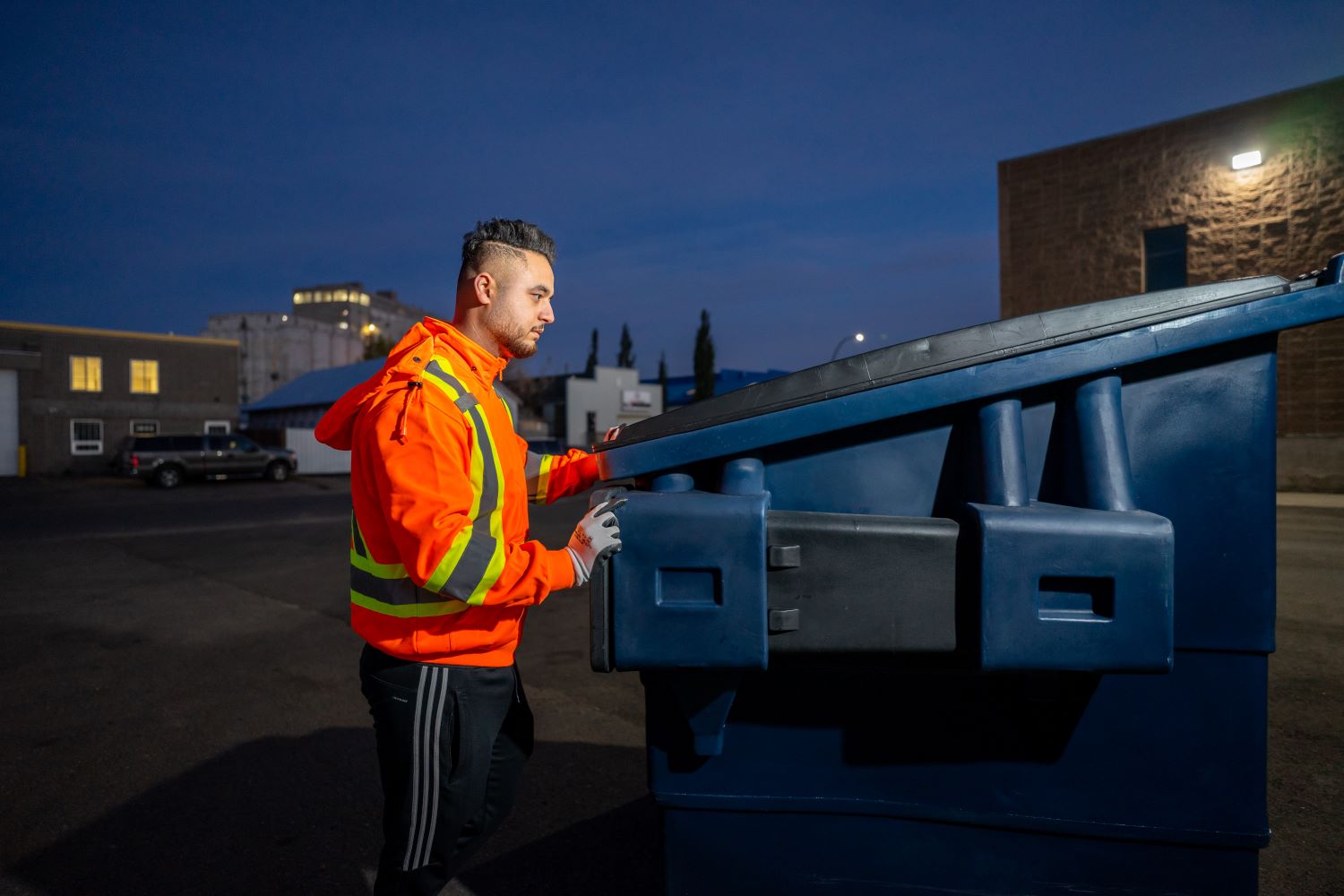Recycling Is Changing
And You Should Be Too!
Recycled Materials As A Commodity
Did you know… that there is a global market for recycled goods?! It’s true! There are countries that import recycled waste from other countries to use as inputs in manufacturing and other industries. We all know that recycled plastic can be turned into shirts and sleeping bags (among other things), but did we all know that it is first packaged and sold to the highest bidder (or in some cases the only bidder)? Plastics are an important example. Countries that claim to have strong plastic recycling programs are in many cases not doing anything to recycle those materials. They simply collect and package the materials for export. In most cases, they are exporting to China. Since 1992 China has imported an estimated 72% of all the world’s plastic waste.
Canada’s Part In This
First of all, Canada is a big producer of waste (we have a problem guys…). We lead the developed world in waste generated per capita, beating the United States by 7%. Needless to say, we produce more recycled waste than we can deal with. While there are some local companies that buy the high-grade materials, we have traditionally relied on China to import most of our paper and plastics (and some other materials). Major Canadian cities generate millions of dollars each year from selling recyclables.
Beyond The Blue Bins
For most people, recycling is simply putting the right items in the right bin (and even here we fail…), but what happens after that? “Don’t know… don’t care…”! What we as consumers do not see is the intense process of managing those materials. Recyclables are collected, transported, sorted, stored, sold, and shipped away. If any of these steps are interrupted, then there is a backlog of recyclable waste to deal with, and it isn’t easy. Just think what would happen if waste collection was delayed for a week at your office or residential building. Would the waste production stop? NO! Waste would continue to accumulate, and the garbage room would quickly be in disarray. Now apply that to a larger scale. If Canadian cities are unable to sell their recycled goods, then the storage facilities fill up fast. What do you do with all those materials that nobody wants? That is a question that comes up more often that you would think.
China’s Import Ban
Although recyclables are often sorted prior to being packaged and shipped, there is a certain amount of contamination with every shipment. Contamination occurs when unrecyclable materials are packed with recyclable materials. High levels of contamination devalue and decrease demand for the commodity. In the past China would accept contaminated recyclables and sort out unusable materials themselves. Shifts in the economy have put China in a position with higher amounts of domestic recycled materials and little need for contaminated imports. At the end of 2017 they closed their doors to many recycling imports, including textiles, mixed paper, and popular plastic materials. A major reason for this decision was the environmental pollution that resulted from “dirty” or contaminated imports.
Where Are We Now?
China’s import ban put many Canadian cities is a tough position. The immediate result was a backlog of materials, many of which are still considered lower-quality or contaminated. There is still an international market for these materials, but the demand has been cut in half. Thailand, Malaysia, India, and Vietnam are among some of the countries still importing plastic waste. The low demand reduces the value of the commodity and favors high-quality materials. Cities that relied on exports in the past now must step up their game with innovative solutions or they may end up sending recyclable materials to the landfill.
This Is Where You Come In!
Most of what must happen to avoid the impending mountain of unusable recyclables takes place at the consumer level. That means YOU! You actually have the power to make recycling work for us, saving the environment AND the recycling industry. Here is how you do it:
- First, reduce the amount of waste you produce! Are you not shocked that Canadians produce more waste per capita than any other developed nation? You should be! Make a few tweaks to the way you live your life and help us get out of that spot. Here are a few ideas:
- Buy in bulk and avoid packaging
- Sell things on Kijiji or donate them to a second-hand store
- Buy things second-hand
- Avoid single-use items (plastic cutlery, drinking straws, etc…)
- Reuse as much as possible (margarine containers make great Tupperware ?)
- Second, make sure you practice CLEAN recycling. Before you drop anything in the blue bins, make sure there is no contamination. This is critical to the success of any program, and it will help us to continue to export anything we cannot use locally. Pay attention to the following:
- Clean all containers so there are ZERO traces of food or chemicals (ie. Empty peanut butter jar)
- Do your research! Find out what is acceptable in your recycling program and stay informed. Make sure you actually do put items in their proper bin
- Third, you can support the international market for recycled materials. By buying goods made from recycled materials you help maintain the demand for recycled materials. You can also support services that use recycled inputs or take measures to reduce their waste.
Don’t cheap out! It is time to step up once more and do the right thing. By making some small changes you can contribute to the cumulative positive impact.






